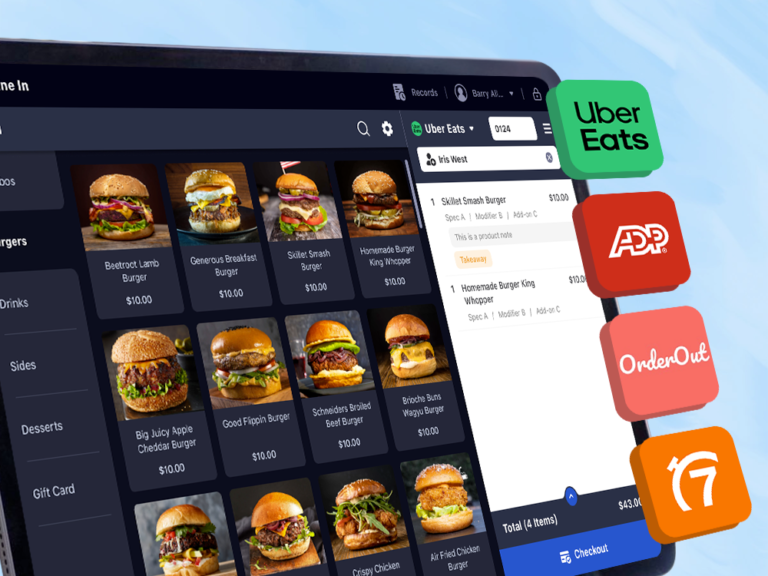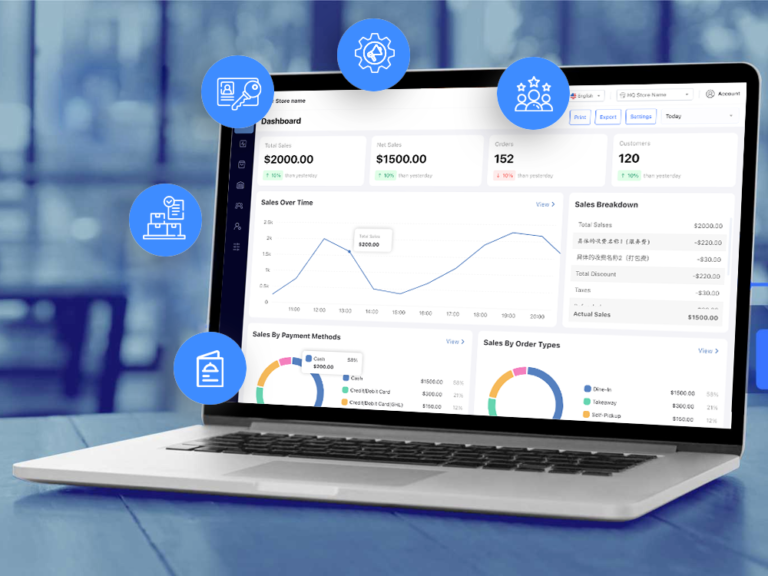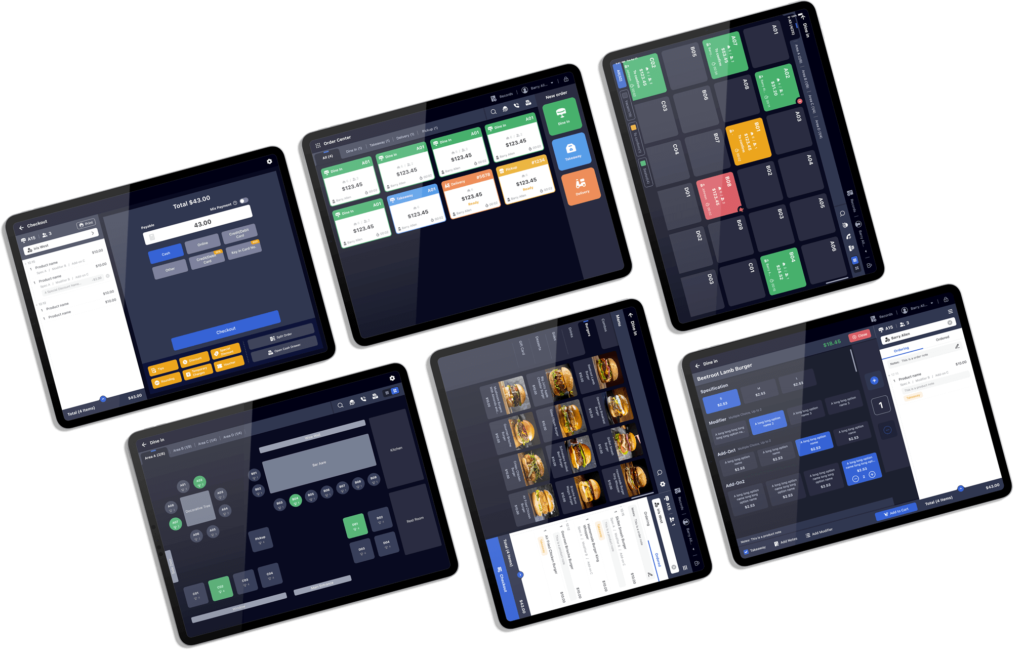Table of Contents
In the fast-paced world of restaurants, efficiency is the key to success. From reducing wait times to streamlining inventory management, every second and every dollar counts. As we move into 2025, cloud-based Point of Sale (POS) systems are revolutionizing how restaurants operate, offering unparalleled flexibility, real-time insights, and scalability. This article explores how cloud-based POS systems, like those offered by OrderPin, are transforming restaurant efficiency and why they’re a must-have for modern food and beverage businesses.
What Is a Cloud-Based POS System?
A cloud-based POS system operates on remote servers, typically hosted on platforms like Amazon Web Services (AWS), rather than on local hardware. Unlike traditional on-premise POS systems that rely on bulky servers and manual updates, cloud POS systems store data securely online, accessible from any device with an internet connection. This shift to the cloud empowers restaurants to manage operations seamlessly, whether from the dining room, a back office, or even remotely.
OrderPin’s cloud-based POS, for example, leverages AWS’s robust infrastructure to deliver a reliable, fast, and secure platform that integrates tableside ordering, online orders, QR code menus, and more—all in real time.
Key Ways Cloud-Based POS Systems Boost Efficiency
Let’s dive into the specific ways cloud-based POS systems are helping restaurants save time, reduce costs, and improve customer satisfaction in 2025.

1. Accessibility from Anywhere
One of the biggest advantages of a cloud-based POS is its accessibility. Restaurant owners and managers can monitor operations from anywhere—whether they’re at the restaurant, at home, or on the go. Need to check sales data during a supplier meeting? Pull up the dashboard on your smartphone. Want to update menu items while traveling? Log in from a laptop.
This flexibility eliminates the need to be physically present at the restaurant for routine tasks. OrderPin’s cloud POS, for instance, offers a web-based backoffice that lets managers adjust pricing, track inventory, or review staff performance from any device, reducing downtime and enabling faster decision-making.
Efficiency Impact: Managers save hours weekly by accessing real-time data remotely, allowing them to focus on strategic tasks like marketing or customer engagement.
2. Real-Time Data for Smarter Decisions
Cloud-based POS systems provide instant access to critical data, such as sales trends, inventory levels, and customer preferences. Unlike traditional systems that require manual reports or end-of-day batch processing, cloud POS updates data in real time. This means you can:
Track Sales: See which menu items are selling best during a busy dinner rush.
Monitor Inventory: Get low-stock alerts before running out of key ingredients.
Analyze Customer Behavior: Identify loyal customers or popular order combinations to tailor promotions.
For example, a fast-casual restaurant using OrderPin’s cloud POS noticed a spike in orders for a specific dish during lunch hours. By analyzing real-time data, they adjusted staffing and inventory to meet demand, reducing wait times by 20% and increasing customer satisfaction.
Efficiency Impact: Real-time insights enable proactive decisions, minimizing waste and optimizing operations during peak hours.
3. Streamlined Omnichannel Ordering
Today’s diners expect a seamless experience, whether they’re ordering tableside, online, via a QR code, or through a third-party delivery platform. Cloud-based POS systems integrate all these channels into a single platform, eliminating the need for multiple systems or manual order entry.
OrderPin’s POS, for instance, syncs orders from UberEats, DoorDash, in-house kiosks, and QR code menus, routing them directly to the kitchen. This reduces errors (like missed orders) and speeds up service. Servers no longer need to juggle multiple tablets or re-enter orders, freeing them to focus on customer service.
Efficiency Impact: Omnichannel integration cuts order processing time by up to 30%, boosting table turnover and revenue.
4. Scalability for Growing Businesses
As restaurants expand to multiple locations or add new services (like catering or delivery), their POS system needs to keep up. Cloud-based POS systems are inherently scalable, allowing businesses to add new terminals, locations, or features without costly hardware upgrades.
OrderPin’s AWS-based platform, for example, supports multi-location restaurants by centralizing data in the cloud. A restaurant chain can monitor sales and inventory across all locations from a single dashboard, ensuring consistency and efficiency. Adding a new location is as simple as setting up new devices and connecting them to the cloud—no need for on-site servers or complex installations.
Efficiency Impact: Scalability reduces setup time for new locations by weeks, enabling faster expansion with minimal disruption.
5. Reduced Maintenance and Downtime
Traditional POS systems require regular software updates, hardware maintenance, and backups, which can lead to costly downtime. Cloud-based POS systems offload these tasks to the provider, ensuring automatic updates, secure backups, and minimal maintenance.
OrderPin’s cloud POS, hosted on AWS, guarantees 99.9% uptime and automatic updates, so restaurants never miss a sale due to system failures. If a tablet or terminal breaks, staff can switch to another device (like a smartphone) and continue operations without skipping a beat.
Efficiency Impact: Reduced downtime saves restaurants thousands annually in lost sales and IT costs.
Case Study: How OrderPin’s Cloud POS Transformed a Restaurant
Consider the example of Bella’s Bistro, a mid-sized restaurant in Austin, Texas. Before adopting OrderPin’s cloud-based POS, Bella’s relied on an outdated on-premise system that required nightly backups and frequent IT support. Order errors were common during busy shifts, and managers spent hours generating reports.
After switching to OrderPin’s AWS-based POS, Bella’s saw immediate improvements:
Faster Service: QR code ordering and omnichannel integration reduced order processing time by 25%.
Real-Time Insights: Managers used sales data to optimize staffing, cutting labor costs by 15%.
Remote Management: The owner monitored operations from home, saving 10 hours weekly on-site.
Customer Satisfaction: Shorter wait times led to a 20% increase in positive online reviews.
By leveraging OrderPin’s cloud POS, Bella’s boosted efficiency and profitability, positioning itself for growth in 2025.

Future Trends: Cloud POS in 2025 and Beyond
As restaurant technology evolves, cloud-based POS systems are set to become even more powerful. Here are some trends to watch in 2025:
AI Integration: Cloud POS systems will use AI to predict inventory needs, recommend menu changes, and personalize customer offers.
IoT Connectivity: Integration with smart kitchen appliances (e.g., ovens that notify the POS when food is ready) will streamline operations.
Voice Ordering: Cloud platforms will support voice-activated ordering, reducing staff workload.
Enhanced Security: Advanced encryption and fraud detection will protect customer data.
OrderPin is already preparing for these trends, with plans to integrate AI-driven analytics and IoT compatibility into its cloud POS, ensuring restaurants stay ahead of the curve.
How to Get Started with a Cloud-Based POS
Ready to boost your restaurant’s efficiency with a cloud-based POS? Here’s a quick guide:
Assess Your Needs: Identify must-have features like inventory tracking, omnichannel ordering, or multi-location support.
Choose a Provider: Look for a reliable, scalable platform like OrderPin, with AWS-backed infrastructure and a user-friendly interface.
Test Compatibility: Ensure the POS works with your existing devices (e.g., tablets, printers) to minimize costs.
Train Staff: Opt for a system with a short learning curve (OrderPin’s takes just 5 minutes to master).
Monitor Results: Use real-time data to track improvements in speed, sales, and customer satisfaction.
Conclusion
Cloud-based POS systems are no longer a luxury—they’re a necessity for restaurants aiming to thrive in 2025. By offering accessibility, real-time data, omnichannel integration, scalability, and low maintenance, platforms like OrderPin empower restaurants to operate smarter, not harder. Whether you’re a small café or a multi-location chain, a cloud POS can transform your efficiency, delight your customers, and boost your bottom line.


